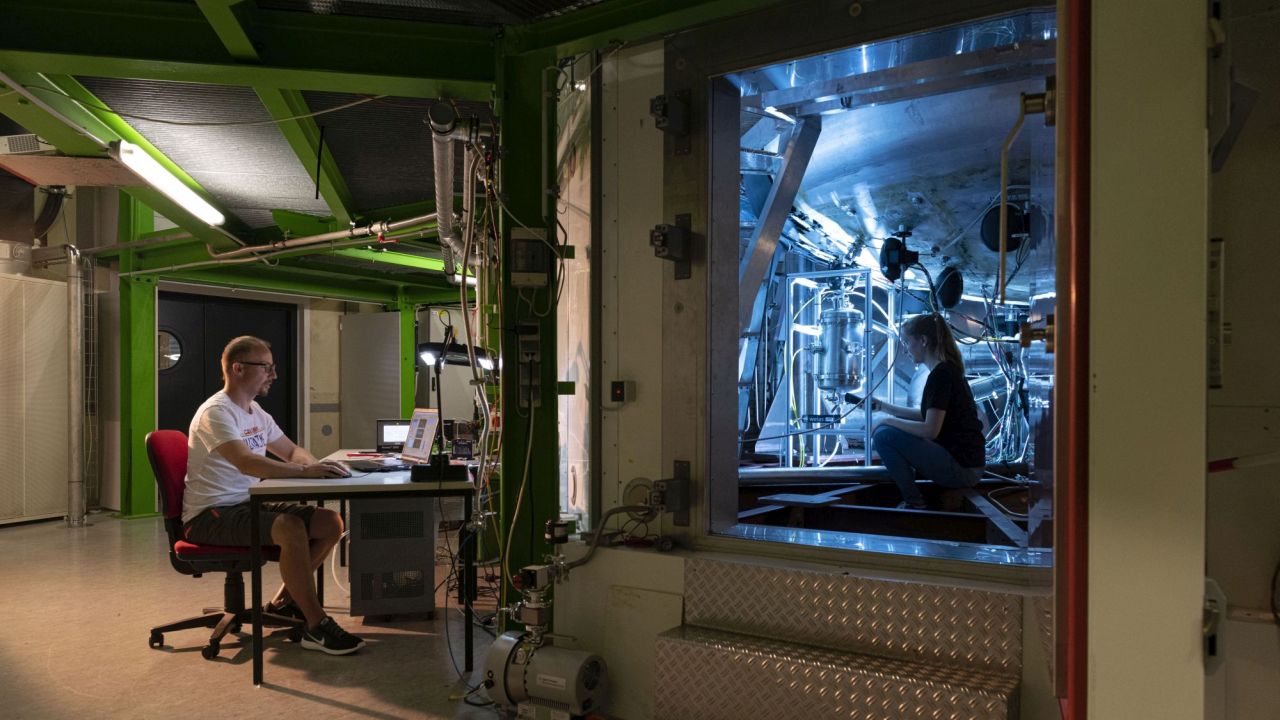Clouds play an important role in the Earth’s climate system. Based on Europe-wide measurements, the topical center CIS will create a broad database to better understand the influence of cloud properties on climate. The multinational consortium led by Karlsruhe Institute of Technology (KIT) is part of the European research infrastructure ACTRIS for long-term observation of aerosols, clouds, and trace gases.
“Clouds transport water and bring precipitation, they cool the Earth by reflecting incident sunlight, and envelope our planet like a blanket that prevents heat from being dissipated into space,” says Dr. Kristina Höhler. The chemist and her colleague, physicist Dr. Ottmar Möhler, work at the Atmospheric Aerosol Research Division of KIT’s Institute of Meteorology and Climate Research (IMK-AAF) and now head the newly founded topical center CIS (Cloud In-Situ Measurements) of ACTRIS (stands for The Aerosol, Clouds and Trace Gases Research Infrastructure) that will start work in 2021.
“CIS is one of six topical centers specialized in remote sensing and in-situ studies of aerosols, clouds, and trace gases. They form the heart of the pan-European ACTRIS infrastructure,” Höhler says. The CIS infrastructure will be set up in the next five years to coordinate Europe-wide direct measurement of cloud properties.
The two KIT researchers have been investigating aerosol-cloud processes for years. For this purpose, they use, among others, the cloud simulation chamber AIDA (stands for Aerosol Interaction and Dynamics in the Atmosphere) on KIT’s Campus North, the only facility of this kind in Europe. Höhler, Institute Manager of IMK-AAF, and Möhler, Head of the Aerosol-Clouds Processes Research Group, were entrusted with the management of CIS by the Interim ACTRIS Council (IAC), a committee made up of representatives of ministries and funding organizations.
Quality Assurance and Data Comparability
The radiation balance of clouds – heating and cooling – is influenced by their height in the atmosphere, the number and size of their particles, and the ratio of water droplets and ice they are made of. The global rise in temperatures can cause clouds to develop at other altitudes or less or more cloud ice to form. “To better understand the exact influence of cloud properties on our climate and to make good forecasts, long-term observations of high quality and measurement accuracy are important,” Höhler emphasizes. In addition to monitoring the observation stations, one of the main tasks of CIS will be to ensure the quality and comparability of data collected by observatories, mobile measuring platforms, and laboratories. To calibrate and standardize measuring instruments, another smaller cloud simulation chamber will be built at KIT. CIS supports the operation of ACTRIS national facilities and will offer training courses and seminars for the participating scientists, among others.
Long-term Observation for Improved Climate Models
“It is our goal to support and coordinate the establishment of numerous national measuring stations across Europe,” Höhler says. Measurements and investigations of the influence of clouds on the climate over the years will produce regional and seasonal data. With them, climate models will be improved and further developed. The insurance sector, for instance, will be able to use the information to better predict the probability of extreme weather events. It is also planned to make the results of the long-term observations available to authorities, political decision-makers, and the interested public in an open database.
In addition to KIT, the CIS consortium partners are the Leibniz Institute for Tropospheric Research in Leipzig, the Sonnblick Observatory in Austria, and the University of Manchester in Great Britain. (afr)
More about the KIT Climate and Environment Center: http://www.klima-umwelt.kit.edu/english
Being “The Research University in the Helmholtz Association”, KIT creates and imparts knowledge for the society and the environment. It is the objective to make significant contributions to the global challenges in the fields of energy, mobility, and information. For this, about 10,000 employees cooperate in a broad range of disciplines in natural sciences, engineering sciences, economics, and the humanities and social sciences. KIT prepares its 22,800 students for responsible tasks in society, industry, and science by offering research-based study programs. Innovation efforts at KIT build a bridge between important scientific findings and their application for the benefit of society, economic prosperity, and the preservation of our natural basis of life. KIT is one of the German universities of excellence.

